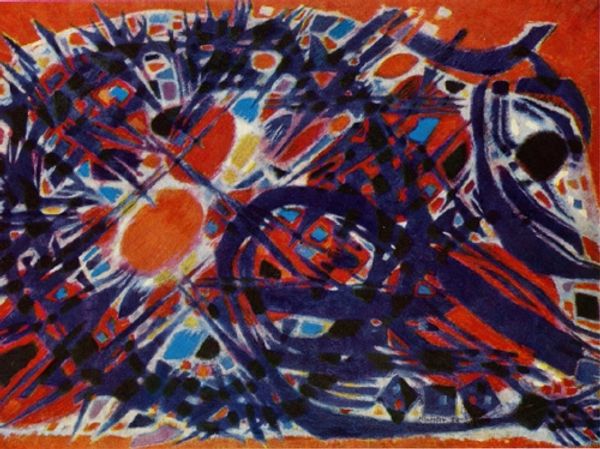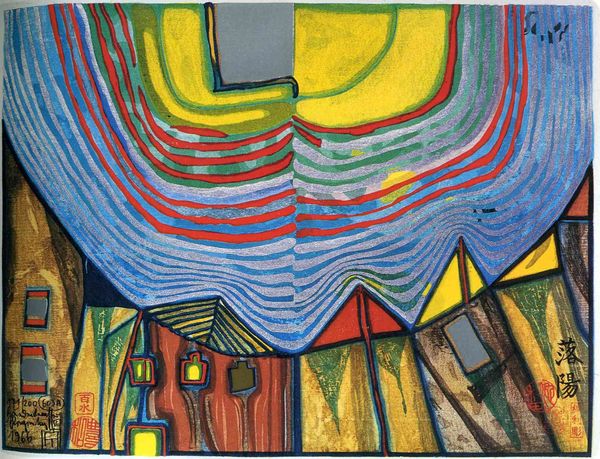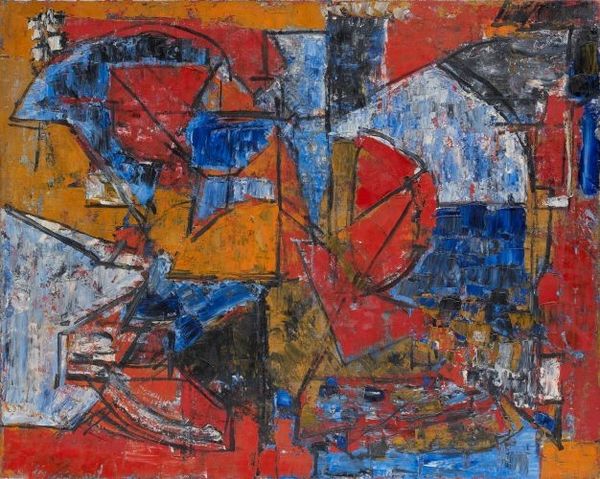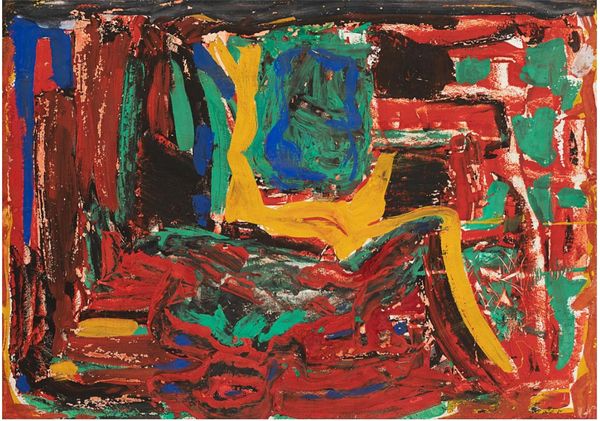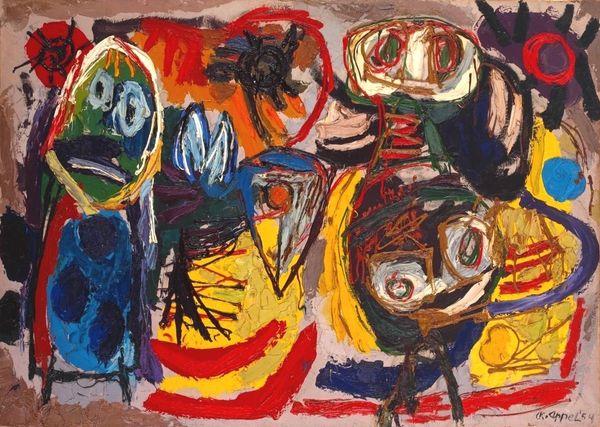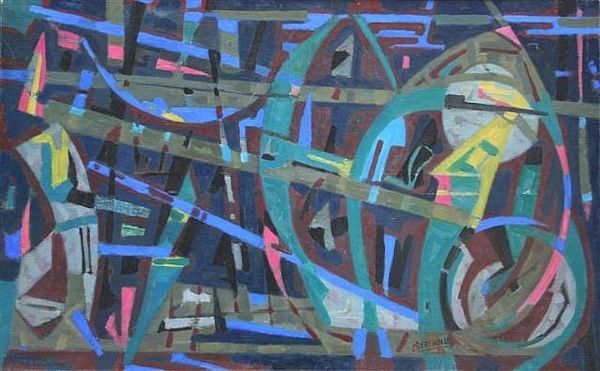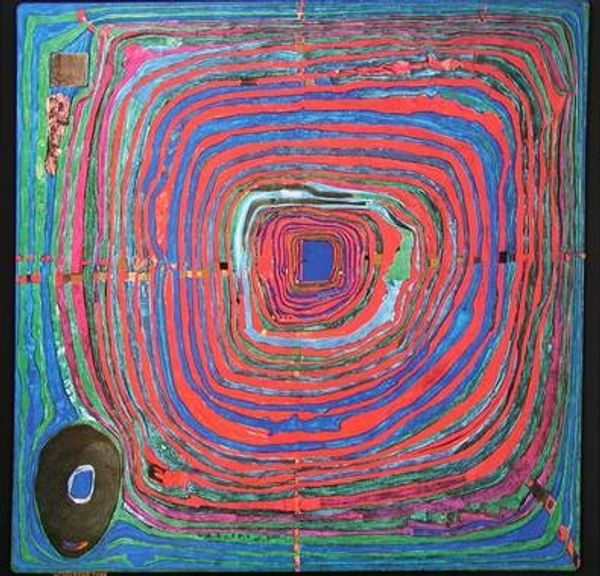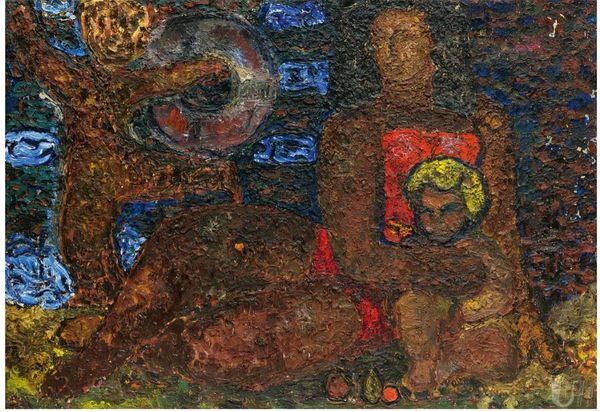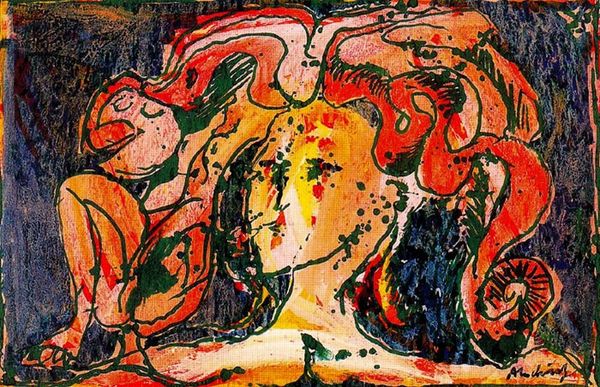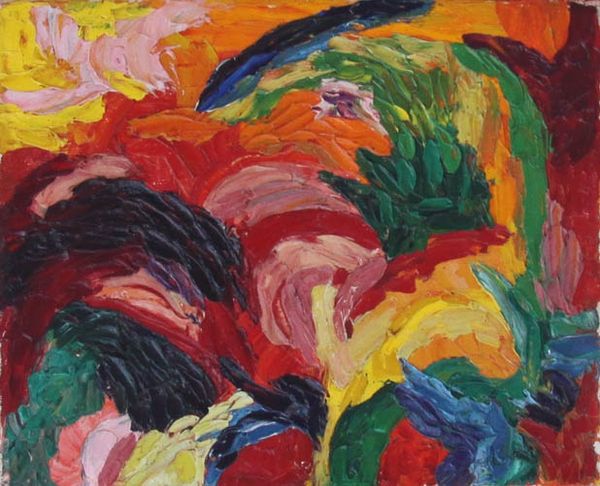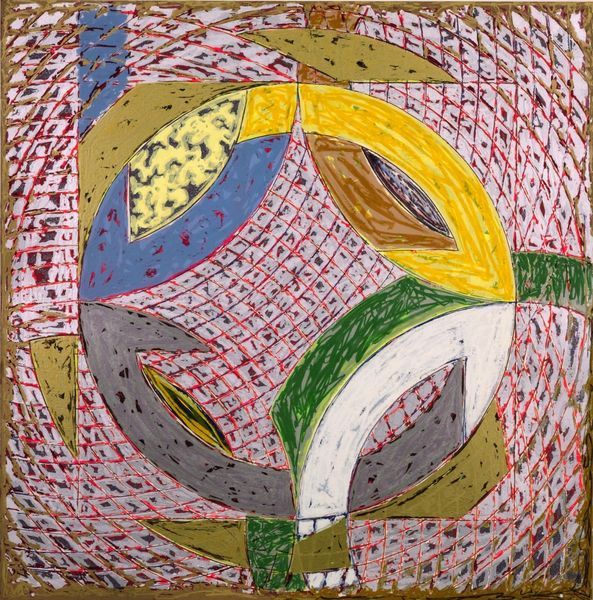
Copyright: NAMIDA AG, Glarus (displayed with the permission of Hundertwasser Non-Profit Foundation) The displayed work of art is protected under the copyright law. In particular, it is not permitted to reproduce, to alter, to print or to publish these works of art. Violations will be prosecuted according to civil and criminal law.
Curator: Welcome. We're standing before Friedensreich Hundertwasser's painting, "421 The Tower of Babel Pierces the Sun," an acrylic on canvas completed in 1959. It’s a particularly vibrant piece from his early period. Editor: My first impression is how the painting hums with energy. The swirling blues and yellows contrasted with that stark red create a mesmerizing, almost dizzying effect. It really pulls you in. Curator: Absolutely. Hundertwasser's rejection of straight lines, visible in those somewhat erratic forms, reflects his broader philosophy, a kind of architectural ecology. He deeply questioned modern urban planning. Editor: That makes perfect sense given the title and his strong environmental advocacy. The Tower of Babel as a metaphor for hubris and unchecked ambition piercing the sun, which I interpret as a life source… It feels incredibly relevant today. Curator: It’s a layered piece. The tower form, almost spiraling inward, also suggests organic growth, echoing his advocacy for architecture that harmonizes with nature, or even integrates into nature itself. Think of his famous apartment blocks with trees growing from the windows. Editor: And that central blue form. Is it truly piercing or perhaps merging with that solar-like shape? I keep thinking about how these themes, ruin versus utopia, collapse versus creation, are constant tension points in our culture. How does the social responsibility of progress and construction figure into the creation and interpretation of artworks such as this? Curator: Hundertwasser operated outside traditional artistic constraints; he advocated against standardized living, questioning rational, functional architecture in the post-war era. Editor: It makes one consider the politics inherent within architectural forms, who they include, who they exclude. A call for a more democratized aesthetic seems to be apparent. It's a pretty brave sentiment for that era. Curator: Certainly, an artwork brimming with both vibrant optimism and ecological concern. It demonstrates how early modernist impulses were starting to incorporate deeper levels of societal critique. Editor: An ambitious work that truly manages to feel like an artistic premonition, raising ever important questions about our impact and future that demand conversation today.
Comments
No comments
Be the first to comment and join the conversation on the ultimate creative platform.
